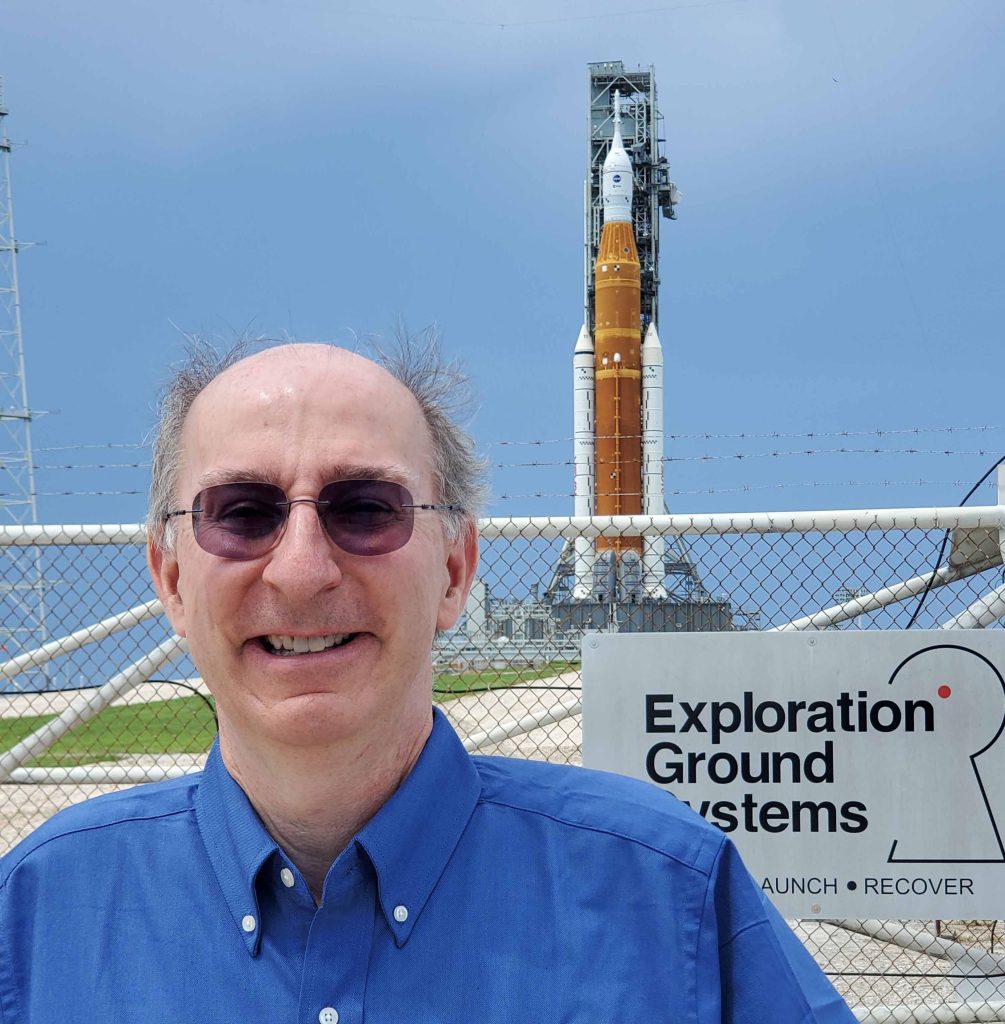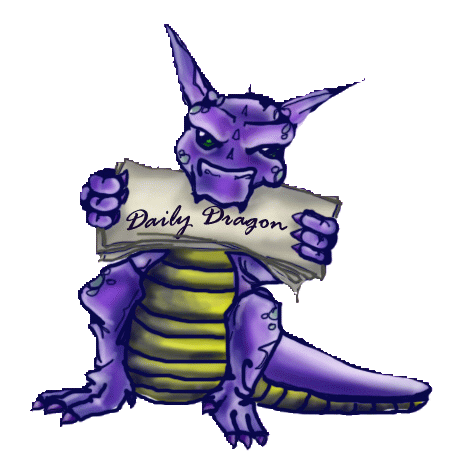
Author Les Johnson has published more than two dozen works that include novels, short stories, edited anthologies, and nonfiction books and articles, as well as a host of technical articles. A physicist with decades at NASA and a host of awards to his credit, he is an elected member of the International Academy of Astronautics, a fellow of the British Interplanetary Society, a cofounder of the Interstellar Research Group, and a member of the Science Fiction & Fantasy Writers of America and of MENSA. He also holds three patents. Earlier this year, he retired from NASA and his latest position there, Chief Technologist for the George C. Marshall Space Flight Center in Huntsville, Alabama.
Daily Dragon (DD): When did you first know you wanted a career devoted to outer space, and what was your path to NASA?
Les Johnson (LJ): I was seven years old when my parents awakened me to watch Neil Armstrong land and take the first steps on the moon. At about age twelve, my older sisters allowed me to stay up late with them on a Saturday night to watch reruns of the original Star Trek. Seeing Captain Kirk exploring strange new worlds was all it took for me to realize I wanted to become a physicist, work for NASA, and help make the dream of traveling to the stars a reality. That has been my focus since then. I was truly blessed to make that dream come true.
My path to NASA began with supportive parents and some great teachers in my Ashland, Kentucky, high school and then college. My thesis work at Vanderbilt University was funded by NASA. (I was working on solving a problem called “space glow.”) As I was finishing my degree, the department at NASA that funded my work had a job opening to which I applied—and was rejected! Instead, I took a job in Huntsville, Alabama, working for a defense contractor until I had another chance to apply at NASA and was successful this time. I began working there in 1990.
DD: You wrote nonfiction books for several years before publishing your first novel. What is that novel about, and what inspired you to write that story?
LJ: My first novel, Back to the Moon, with my co-author Travis Taylor, is ostensibly about humanity’s return to the Moon for the first time since Apollo. It is really our homage to Jack London’s classic novel, The Call of the Wild. Instead of the unforgiving Alaskan wilderness trying to kill our heroes at every turn, it’s the unforgiving environment of space. Of course, there’s also espionage, a murder plot, and a trip to the Moon!
DD: Is there a theme that runs through all your fiction?
LJ: Yes. I am an optimist about our future. You will not find me writing anything dystopian. There is no better time in history to be a human being on Earth than today—by all measures. I believe we can solve our social, environmental, and economic problems and make tomorrow even better for our children and grandchildren. Not only can we do that, we MUST do that. Writing about people overcoming overwhelming odds is one of my contributions to making that happen. (That, and my work at NASA.)
DD: You’ve written short stories as well as novels. Is there a difference in the ways you approach the two forms other than length?
LJ: Length drives everything. In short fiction, you need to get to the story quickly and resolve it quickly. There is not as much time for character development, and the more traditional “Three-Act Play” form of fiction writing is not really appropriate.
DD: You’ve coedited several anthologies. What do you find most challenging and most rewarding about your editorial work?
LJ: Writers can be prima donnas! Seriously, writers can grow rather attached to their creations, and sometimes they just don’t want editors doing what editors are supposed to do—make sure the story flows, the characters are believable and consistent throughout, and that the reader can get into the story quickly, since these are short stories. Not all long-form fiction writers can successfully do short-form fiction. Most writers I work with will listen to the critique and work with me to make adjustments. Sometimes they convince me that a change isn’t needed. Sometimes they aren’t as polite—but that is rare!
DD: You’ve collaborated with others as both a writer and an editor. What do you think is key to a successful collaboration?
LJ: It sounds overworked, but it is true—communication! Travis Taylor and I outline our novels together over lunches, usually Mexican food, and by the time we begin writing we know where the story needs to go. Now, the characters don’t always allow us to go that way, and when that happens, we meet again to adjust. (Darn those characters anyway!) Collaborating on nonfiction is easier. We each write initially about those areas of which we have detailed knowledge and then edit each other—usually many times.
DD: What draws you to write about science for a non-technical audience, and how do you approach that?
LJ: I remember my youth, devouring both every science fiction novel and popular science book I could get my hands on. I learned more about chemistry and physics, in a broad sense, from books by Isaac Asimov and Carl Sagan than I did from my high school teachers. When I got to college and graduate school, these books helped me contextualize the details I was learning in chemistry, physics, math, and biology and reminded me of the “big picture” (space exploration!) and why it was important that I was doing what I was doing. In short, I write because I want a younger person (notice I said, ‘younger,’ not ‘young’!) to take interest, learn something, and perhaps follow a career in math and science.
I am probably one of the few NASA Chief Technology Officers with a BA. That’s correct, I went to a liberal arts college (Transylvania University in Lexington, KY) and enjoyed learning about math, science, literature, sociology, psychology, philosophy, history, music, etc. It was there that I realized people can be so “into” their disciplines that they are incapable of talking about their work and interests at a level for the average person who is not an expert in their field. And, yes, this is a major problem with NASA scientists and engineers! I was very successful at NASA getting my research funded—not just because it was technically sound, but because I could explain it to managers who hadn’t done any technical work for 20 years! The key is boiling down the concepts to their most simple terms and finding everyday analogies to relate and explain the concepts. People like that. I’ve been told that is one of my talents.
DD: Is there a piece or a group of pieces—fiction, nonfiction, or both—that you took particular pleasure in writing?
LJ: I very much enjoyed writing my novel Mission to Methone. The idea was born out of my technical work at NASA, the lived experience of having someone in my life who is on the autism spectrum, and my fascination with what a first contact with an alien species might be like. The protagonist, without ever saying so, is on the spectrum, and the story is told from his viewpoint.
As for my nonfiction, A Traveler’s Guide to the Stars is the one to cite. In this book, I describe not only how we might someday travel to the stars but why we must, and then I explain to the reader why it will be so difficult to accomplish. A fan wrote to tell me that while he was reading the book, he felt like he was sitting in a café talking with me about star travel over a cup of coffee. That was what I wanted, and given the way the book has sold, I must have accomplished my goal. It is now translated into seven languages—a first for me!
DD: Congratulations! What’s next for you?
LJ: Leaving NASA was bittersweet. I loved my job, but as with most things in life, there is a time to move on. This was one of those times for me. In the short term, I will be writing. I have a non-fiction book to complete for Princeton University Press and a science fiction novel for Baen Books.
I also plan to do a bit of Christian apologetics. These will be presentations explaining the Christian faith and our reasons for believing—answering questions, aiming to strengthen the faith of believers. My wife and I recently received our associate degrees in ministry, after completing the coursework taken over the last two years. I’m excited to be able to share my faith with others and help them understand that science and religion do not need to be in conflict.
I’ve had a few inquiries about becoming a part-time consultant, and I suspect I’ll do some of that after the first of next year. I’m also involved in some space-related nonprofits, The Interstellar Research Group and the Planetary Sunshade Foundation. I’m passionate about both of their missions, and I plan to spend more time helping them. As I write this, I realize this doesn’t sound like someone who just retired…
You can learn more about Les Johnson and his work by checking his website, https://www.lesjohnsonauthor.com, and his social media:
- Facebook: LesJohnsonAuthor
- LinkedIn: lesjohnson1
- Instagram: @lesauthor
- TikTok: @lesauthor
